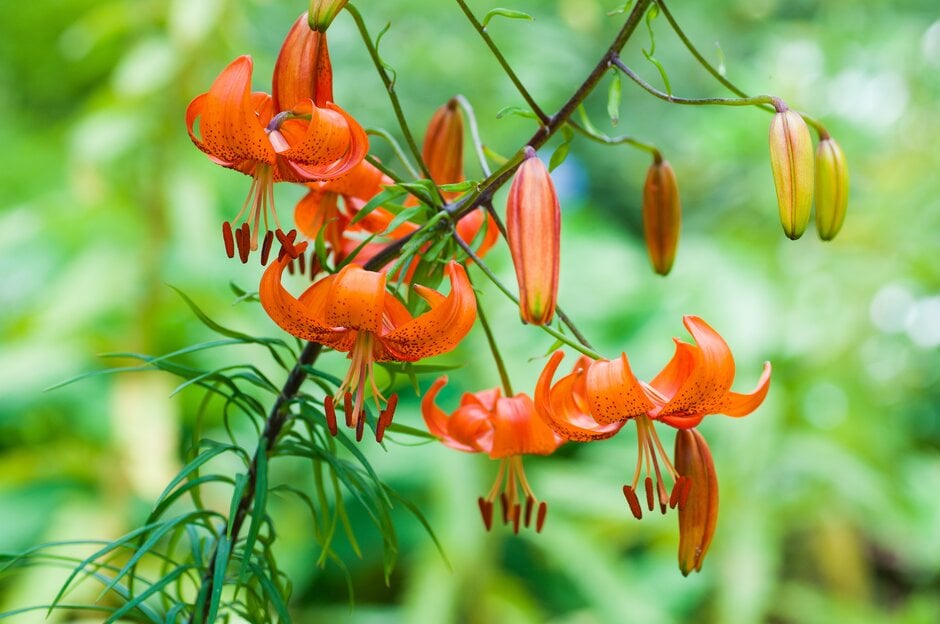Lilium lancifolium (IXc/d)
tiger lily
A robust, stem-rooting, clump-forming lily with dark purple stems and shiny, narrow, dark green leaves up to 20cm long. Purplish-black bulbils are produced in the upper leaf axils. Up to 40, nodding, orange, turkscap flowers, with dark purple spots, are produced in late summer and early autumn
Synonyms
Lilium tigrinumSize
Ultimate height
1–1.5 metresTime to ultimate height
2–5 yearsUltimate spread
0.1–0.5 metresGrowing conditions
Moisture
Moist but well–drainedpH
Acid, Alkaline, NeutralColour & scent
| Stem | Flower | Foliage | Fruit | |
| Spring | Green | |||
|---|---|---|---|---|
| Summer | Purple | Orange Purple | Green | |
| Autumn | Purple | Orange Purple | Green | |
| Winter |
Position
- Full sun
Aspect
South–facing or West–facing or East–facing
Exposure
Sheltered Hardiness
H6Botanical details
- Family
- Liliaceae
- Native to GB / Ireland
- No
- Foliage
- Deciduous
- Habit
- Columnar upright
- Potentially harmful
- Ornamental bulbs - not to be eaten. Wear gloves and other protective equipment when handling. TOXIC to pets if eaten (cats) - see the HTA guide to potentially harmful plants for further information and useful contact numbers
- Genus
Lilium are bulbous perennials with erect stems bearing whorled or spirally arranged leaves and terminal racemes or umbels of bowl-shaped, trumpet-shaped, funnel-shaped or turks cap shaped flowers, often fragrant, and white, yellow, orange or red
- Name status
Correct
- Horticultural Group
- These include lily species and cultivars of lily species with downward-facing flowers
- Plant range
- E China, Japan, Korea
How to grow
Cultivation
Prefers moist, acid soil enriched with leaf mould or well-rotted organic matter, but will tolerate some lime
Propagation
Propagate by seed, sown as soon as ripe; by removing bulblets from parent bulbs as they become dormant; by removing bulbils from the leaf axils; or by scaling. See bulb propagation
Suggested planting locations and garden types
- City and courtyard gardens
- Cottage and informal garden
- Flower borders and beds
- Cut flowers
Pruning
No pruning required
Pests
May be susceptible to lily beetle, aphids, slugs, snails, Thrips, leatherjackets, and wireworms, and to damage by rabbits and voles; plants in containers may be susceptible to vine weevil
Diseases
May be susceptible to grey moulds and a virus; see lily diseases
Get involved
The Royal Horticultural Society is the UK’s leading gardening charity. We aim to enrich everyone’s life through plants, and make the UK a greener and more beautiful place.
